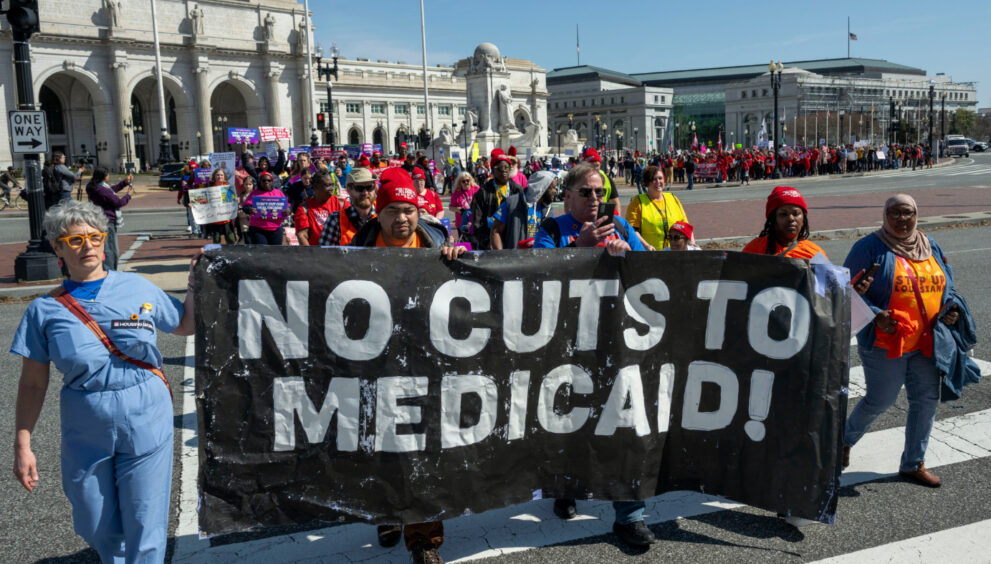Misconceptions Regarding the Causes of the Budget Deficit

The most recent long-term projections from the Congressional Budget Office highlight the unsustainability of our current fiscal path. While not surprising, this does beg the question: “How did we end up here?”
Misleading answers may be circulating.
According to the latest data provided by the Treasury Department, the total debt held by the public has now reached $29 trillion.
Projections by the CBO indicate a significant increase in the budget deficit, which is expected to reach 7.3 percent of GDP by 2055. Concurrently, the debt held by the public is anticipated to peak in 2029 and then continue growing to 156 percent of GDP over the next three decades — essentially 1.5 times the size of the U.S. economy.
Before delving further into the key figures, it’s worth noting that even these forecasts are quite optimistic. They hinge on the assumption that the 2017 tax cuts will expire, there won’t be any economic crises, global pandemics, or major wars. Moreover, it has been observed that CBO has adjusted its assumptions in recent years, significantly underestimating the actual growth of debt and interest payments over time.
Recent estimates from CBO also indicate when the Treasury will reach the debt ceiling — the date when the government runs out of extra borrowing measures. While the projection suggests there are funds to cover expenses through August or September, it’s possible these funds could run dry as early as late May if borrowing costs exceed expectations.
In summary, CBO has reiterated what we have long been aware of: Our fiscal situation is grave, and it is poised to worsen considerably in the years and decades to come.
How did we arrive at this point? Let’s start with a misleading notion. Some research groups have contended that the Bush and Trump tax cuts account for over 90 percent of the shift in the debt trajectory. Similarly, certain policymakers have asserted that the Trump tax cuts play the most significant role in the budget deficit.
CBO’s current projections show that federal outlays will total 23.3 percent of GDP this year, with revenues at 17.1 percent. Compared to historical averages of 20.5 percent and 17.3 percent, respectively, there’s a historical neutral budget balance point of 18.9 percent of GDP.
Based on this reference point, around 71 percent of the 2025 deficit can be attributed to spending policy decisions, with the remainder to tax policy decisions. Essentially, the root of our present deficit issue lies in spending growth, while insufficient tax revenues have also contributed to some extent.
Looking at the long-term structural deficit of the nation, using the same assumptions points yet again towards spending policy decisions being the driving force.
Approximately 67 percent of the projected 2050 deficit is attributed to the increase in mandatory spending programs, particularly unbalanced entitlement spending, while the remaining 33 percent stems from growth in interest payments on the debt. The principal mandatory spending program propelling this trend is Medicare, anticipated to swell to almost 7 percent of GDP in the next three decades.
Although attributing the nation’s escalating debt ratio to tax cuts is a common narrative, budget forecasts and historical data paint a different picture. Addressing this challenge will require policymakers to address the challenging but essential task of slowing down the growth of these programs while ensuring continued services for the predominantly elderly populations that rely on them.
Available options may include transforming Medicare into a cash-transfer program similar to Social Security. Alternatively, reining in Medicare spending may involve capping per-enrollee spending increases to match GDP growth.
Policymakers could also investigate other entitlement reform suggestions, like tying the Social Security retirement age to life expectancy and altering the cost-of-living adjustment formula to the “chained consumer price index.” This would provide a more accurate reflection of cost changes for retirees over time. They might also consider transitioning Medicaid to a system of block grants or per capita caps.
Ensuring federal budget sustainability goes beyond blaming tax policy alterations. The latest figures emphasize that addressing this issue will require political courage to curtail the expansion of entitlement spending once again.
Jack Salmon serves as a research fellow at the Mercatus Center at George Mason University.






















































































































































































































































































































































































































































































































































































































































































































































































































































































































































































































































































































































































































































































































































































































































































































































































































































































































































































































































































































































































































































































































































































































































































































































































































































































































































































































































































































































